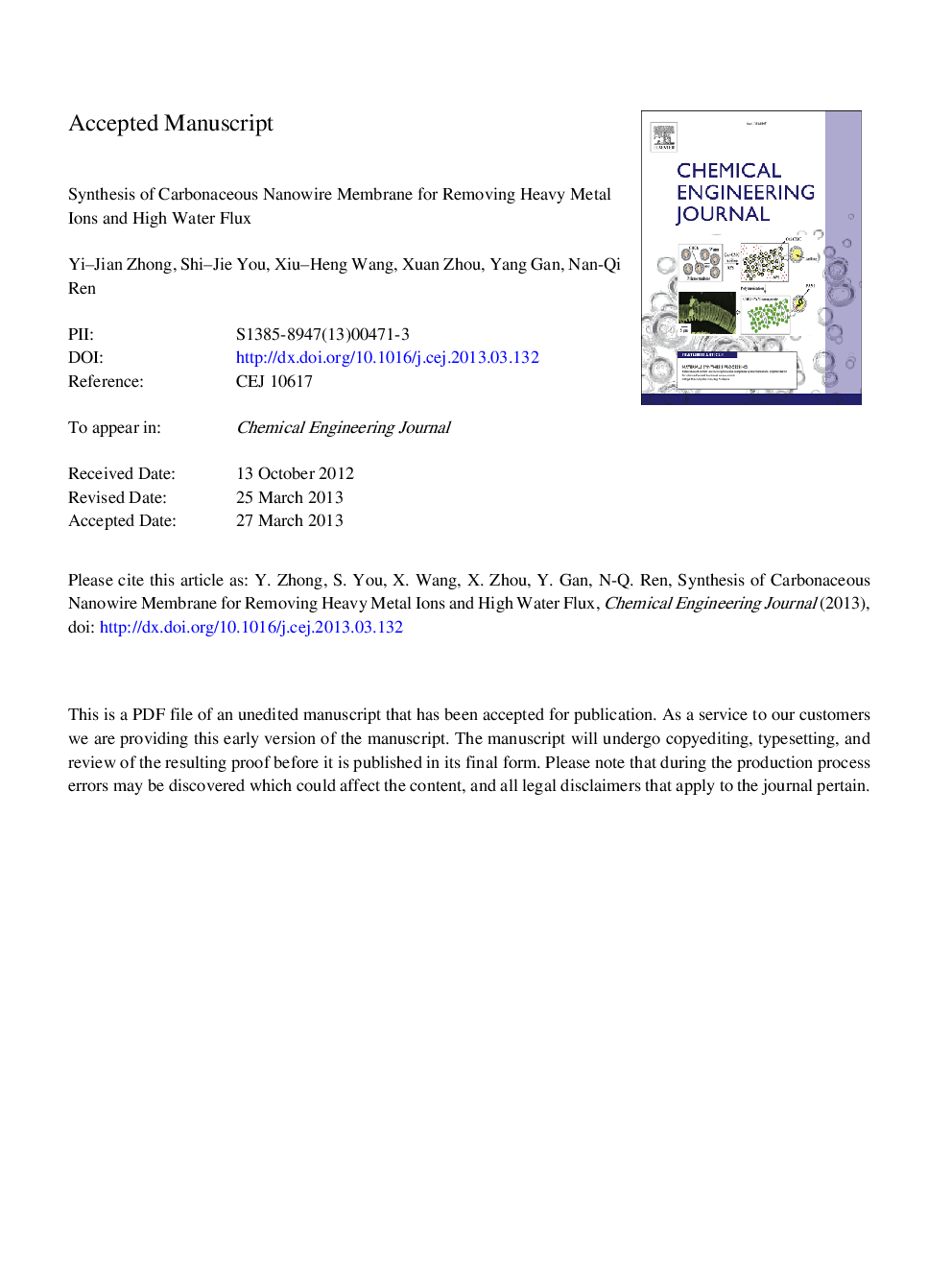| Article ID | Journal | Published Year | Pages | File Type |
|---|---|---|---|---|
| 6587542 | Chemical Engineering Journal | 2013 | 36 Pages |
Abstract
This study investigated the hydrothermal synthesis of carbonaceous nanowire membrane (CNM) and its separation performances in terms of adsorbing heavy metals and transmembrane water permeation in water treatment. The hydrothermal dehydration and carbonization of mono-saccharide (glucose; 180 °C, 48 h) can yield one-dimensional (1D) carbonaceous nanowires in the presence of tellurium nanowire template. The subsequent solution-evaporation-self-assembly process results in the formation of macro-scale two-dimensional (2D) hydrophilic CNM sheet with large specific surface area, developed nanoporosity, and abundant superficial oxygen-containing functional groups. Owing to these unique properties, the CNM is shown to be capable of efficiently adsorbing a variety of heavy metals, and highly permeable to water molecules. The CNM synthesized gives precedence over conventional membrane and adsorbents, and demonstrates promise as sustainable nanomaterial for separation of heavy metals from water via membrane adsorption process.
Related Topics
Physical Sciences and Engineering
Chemical Engineering
Chemical Engineering (General)
Authors
Yi-Jian Zhong, Shi-Jie You, Xiu-Heng Wang, Xuan Zhou, Yang Gan, Nan-Qi Ren,
